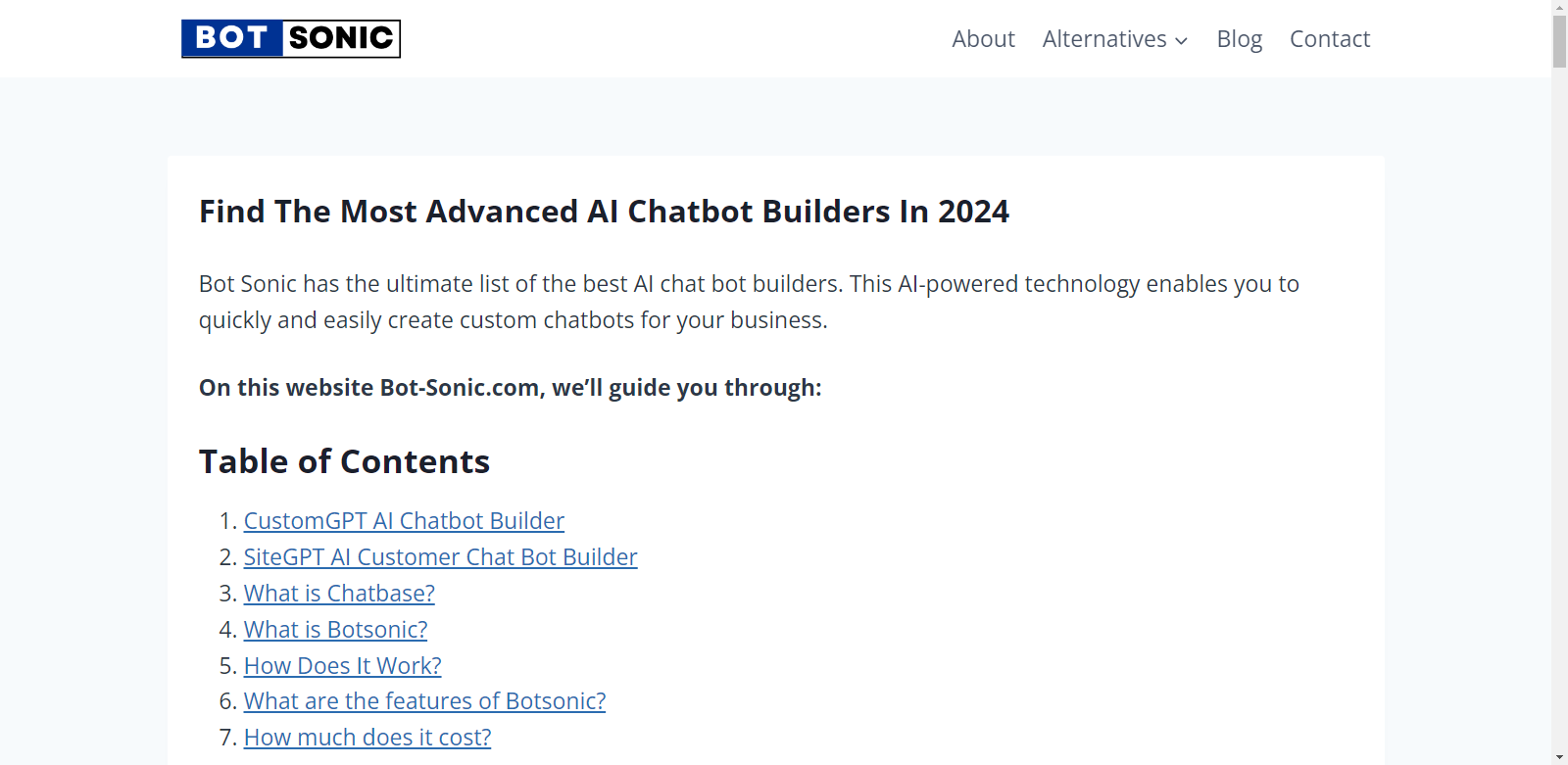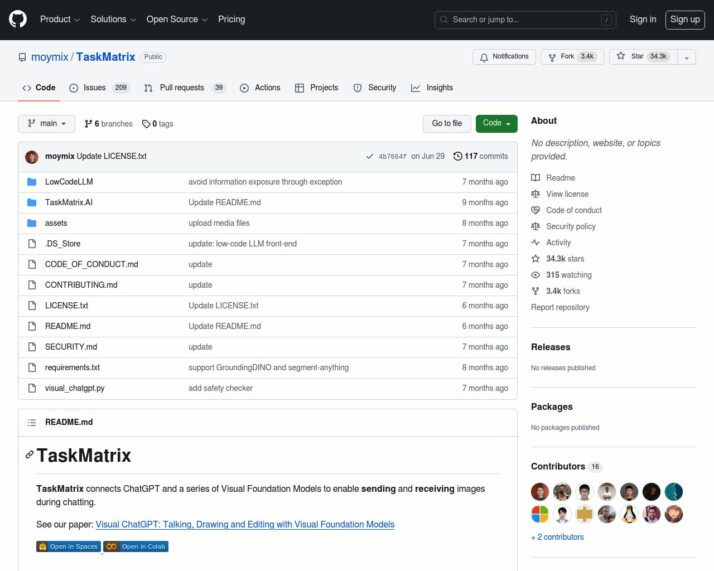TaskMatrix vs. Botsonic/Writesonic: AI Agent Development Showdown
AI-powered platforms revolutionize how businesses develop and deploy intelligent agents. TaskMatrix vs. Botsonic/Writesonic, and SmythOS each offer unique approaches to this challenge. TaskMatrix excels in integrating diverse AI models for complex tasks. Botsonic/Writesonic provides a user-friendly chatbot builder for customer service applications.
SmythOS combines powerful features with an intuitive interface, supporting advanced capabilities like multi-agent collaboration and constrained alignment. This comparison explores the strengths and limitations of each platform, helping developers, business leaders, and AI enthusiasts choose the best solution for their needs. We’ll examine key features, integration capabilities, and overall performance to guide your decision in selecting the ideal AI development environment.
Botsonic/Writesonic Overview
Botsonic/Writesonic empowers businesses to create AI-powered chatbots without coding expertise. This no-code platform leverages GPT-4 technology to deliver intelligent, context-aware conversational experiences across multiple languages.


Designed for quick integration, Botsonic allows businesses to embed customizable chatbots on their websites within minutes. The platform’s visual builder enables extensive customization of chatbot appearance and behavior, ensuring alignment with brand identity. Users can train their chatbots by uploading various file formats and website links, creating personalized AI assistants tailored to specific industry needs.
Botsonic shines in its ability to reduce support volume by up to 80%, freeing human agents to focus on complex interactions.
Botsonic shines in its ability to reduce support volume by up to 80%, freeing human agents to focus on complex interactions. The platform seamlessly integrates with popular tools like Salesforce, Google Docs, WhatsApp, and Telegram, enhancing its utility across diverse business ecosystems. While Botsonic offers powerful features, it lacks some advanced capabilities like debug mode, multi-agent collaboration, and constrained alignment found in more developer-focused platforms.
The user experience prioritizes simplicity, making AI technology accessible to non-technical users. However, this focus on ease of use means some advanced customization options may be limited compared to more complex AI development environments. Botsonic’s customer support and documentation cater to business users, providing resources to maximize the platform’s potential for enhancing customer engagement and operational efficiency.
In the competitive landscape of AI chatbot builders, Botsonic positions itself as a user-friendly solution for businesses seeking to leverage AI for customer interactions without extensive technical resources. Its strengths lie in rapid deployment, multi-language support, and integration capabilities, making it particularly appealing for small to medium-sized enterprises looking to enhance their customer service operations with AI technology.
TaskMatrix Overview
TaskMatrix is an advanced AI-powered ecosystem developed by Microsoft. It enhances general-purpose foundation models like GPT-4 by integrating them with specialized models through APIs. TaskMatrix functions as a project manager, bridging diverse AI models to perform a wide range of tasks efficiently.
The system connects foundation models with specialized models via APIs, enabling execution of tasks in both digital and physical realms. It understands user instructions, generates executable action codes, and performs tasks using appropriate APIs. TaskMatrix includes a vast API repository, an API selector for choosing relevant APIs, and an action executor to carry out tasks.


TaskMatrix’s standout features include its ability to seamlessly integrate multiple AI models and systems. Key components are a conversational foundation model capable of understanding multimodal inputs, a comprehensive API platform, an intelligent API selector, and an action executor. The system’s uniqueness lies in its ability to perform both digital and physical tasks, its lifelong learning capabilities, and provision of interpretable responses through understandable task-solving logic.
TaskMatrix functions as a project manager, bridging diverse AI models to perform a wide range of tasks efficiently.
TaskMatrix aims to create an AI ecosystem leveraging both foundation models and specialized APIs for a variety of tasks. Its goal is to build a super-AI capable of executing complex tasks, enhancing productivity across domains like office automation, robotics, and IoT. However, TaskMatrix faces challenges in scalability, data privacy, and integration complexity. Its open-source nature may also limit enterprise-grade support and security features compared to commercial platforms.
Developers can create and deploy custom AI models, access pretrained models and API connectors, and utilize an extensive resource library. TaskMatrix’s modular design and continuous learning capability make it a versatile tool for developers and businesses integrating advanced AI into their operations.
Feature Comparison
TaskMatrix and Botsonic/Writesonic offer distinct approaches to AI agent development, with key differences in their core components and security features. TaskMatrix shines in its ability to integrate multiple AI models seamlessly, leveraging both foundation models and specialized APIs. This enables TaskMatrix to perform a wide range of tasks across digital and physical domains. In contrast, Botsonic/Writesonic focuses on providing a user-friendly, no-code solution for creating AI-powered chatbots, primarily targeting customer service applications.
A significant gap exists in the debug capabilities. TaskMatrix offers robust debugging tools, allowing developers to troubleshoot and refine AI agents effectively. Botsonic/Writesonic lacks a dedicated debug mode, which may limit the ability to identify and resolve issues quickly. Additionally, TaskMatrix’s support for multi-agent collaboration enables complex task solving through coordinated AI efforts, a feature absent in Botsonic/Writesonic.
In terms of security, TaskMatrix implements constrained alignment, ensuring AI behavior aligns with organizational goals and ethical guidelines. This critical feature is not explicitly mentioned for Botsonic/Writesonic, potentially leaving a gap in ensuring consistent and appropriate AI responses. While both platforms offer data encryption and OAuth support, TaskMatrix’s more comprehensive security approach may better suit enterprise-level requirements.
Feature Comparison Table
| Botsonic/Writesonic | TaskMatrix | SmythOS | |
|---|---|---|---|
| CORE FEATURES | |||
| Visual Builder | ❌ | ✅ | ✅ |
| Debug Tools | ❌ | ✅ | ✅ |
| Multimodal | ❌ | ✅ | ✅ |
| Multi-Agent Collaboration | ❌ | ✅ | ✅ |
| Work as Team | ❌ | ✅ | ✅ |
| Bulk Work | ❌ | ✅ | ✅ |
| Agent Work Scheduler | ❌ | ✅ | ✅ |
| SECURITY | |||
| Constrained Alignment | ❌ | ✅ | ✅ |
| Data Encryption | ❌ | ✅ | ✅ |
| OAuth | ❌ | ✅ | ✅ |
| COMPONENTS | |||
| Huggingface AIs | ❌ | ✅ | ✅ |
| Zapier APIs | ❌ | ✅ | ✅ |
| Classifiers | ❌ | ✅ | ✅ |
| Data Lakes | ❌ | ❌ | ✅ |
| DEPLOYMENT OPTIONS (EMBODIMENTS) | |||
| Deploy as Webhook | ❌ | ✅ | ✅ |
| Staging Domains | ❌ | ✅ | ✅ |
| API Authentication (OAuth + Key) | ❌ | ✅ | ✅ |
| Deploy as Scheduled Agent | ❌ | ✅ | ✅ |
| DATA LAKE SUPPORT | |||
| Hosted Vector Database | ❌ | ❌ | ✅ |
| Sitemap Crawler | ✅ | ❌ | ✅ |
| YouTube Transcript Crawler | ✅ | ❌ | ✅ |
Best Alternative to Botsonic/Writesonic and TaskMatrix
SmythOS stands out as the superior alternative to Botsonic/Writesonic and TaskMatrix, offering a comprehensive AI agent development platform that combines power with accessibility. Our drag-and-drop interface allows users to create sophisticated AI workflows without extensive coding knowledge, democratizing AI development across industries.
Unlike Botsonic/Writesonic’s narrow focus on chatbots, SmythOS enables the creation of versatile AI agents capable of handling complex tasks across multiple domains. We support integration with various AI models, APIs, and data sources, providing unparalleled flexibility in agent design and functionality.
SmythOS enables the creation of versatile AI agents capable of handling complex tasks across multiple domains… providing unparalleled flexibility in agent design and functionality.
While TaskMatrix offers multi-agent collaboration, SmythOS takes this concept further by providing a robust ecosystem for agent interaction and teamwork. Our platform allows for seamless orchestration of multiple AI agents, enabling them to tackle intricate problems collaboratively. This feature, combined with our advanced debugging tools and transparent workflow visualization, gives users unprecedented control and insight into their AI systems.
SmythOS excels in scalability and deployment options, addressing limitations found in both Botsonic/Writesonic and TaskMatrix. We offer multiple deployment environments, including development and production servers, and support various embodiments such as APIs, webhooks, and scheduled agents. This versatility ensures that AI solutions built with SmythOS can easily integrate into existing business processes and grow with your needs.
Security and compliance are paramount in AI development, and SmythOS leads the pack with features like constrained alignment, data encryption, and OAuth support. These robust security measures, often lacking or underdeveloped in competitors, make SmythOS the ideal choice for enterprises requiring stringent data protection and ethical AI practices.
Conclusion
TaskMatrix and Botsonic/Writesonic offer distinct approaches to AI agent development, each with unique strengths. TaskMatrix excels in integrating multiple AI models and APIs, enabling complex task execution across digital and physical domains. Botsonic/Writesonic provides a user-friendly, no-code solution for creating AI-powered chatbots, primarily targeting customer service applications.
However, SmythOS emerges as the superior choice, combining the best of both worlds with additional advanced features. Our platform offers a powerful drag-and-drop interface for creating sophisticated AI workflows without extensive coding knowledge. We support multi-agent collaboration, debug capabilities, and constrained alignment, addressing key limitations found in both TaskMatrix and Botsonic/Writesonic.
SmythOS stands out with its extensive integration ecosystem, supporting over 300,000 integrations and a wide range of AI models from providers like OpenAI, Anthropic, and Hugging Face. Our “Create Once, Deploy Anywhere” approach allows seamless deployment across various platforms, including Google Vertex, Microsoft Copilot, and Amazon Web Services Bedrock.
Experience the future of AI agent development with SmythOS. Create a free account today and discover how we can revolutionize your workflow with intelligent, scalable, and easily deployable AI solutions. For those seeking inspiration, explore our diverse range of AI-powered agent templates to jumpstart your projects and unlock new possibilities in AI automation.
Last updated:
Disclaimer: The information presented in this article is for general informational purposes only and is provided as is. While we strive to keep the content up-to-date and accurate, we make no representations or warranties of any kind, express or implied, about the completeness, accuracy, reliability, suitability, or availability of the information contained in this article.
Any reliance you place on such information is strictly at your own risk. We reserve the right to make additions, deletions, or modifications to the contents of this article at any time without prior notice.
In no event will we be liable for any loss or damage including without limitation, indirect or consequential loss or damage, or any loss or damage whatsoever arising from loss of data, profits, or any other loss not specified herein arising out of, or in connection with, the use of this article.
Despite our best efforts, this article may contain oversights, errors, or omissions. If you notice any inaccuracies or have concerns about the content, please report them through our content feedback form. Your input helps us maintain the quality and reliability of our information.
